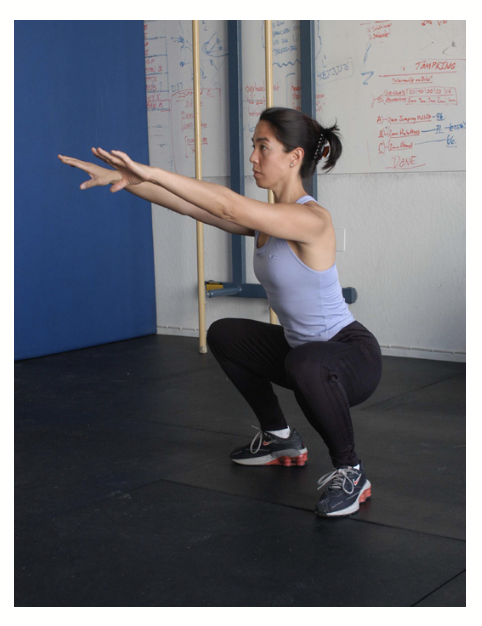Why Squat?
 The squat is essential to your well-being. The squat can both greatly improve your athleticism and keep your hips, back, and knees sound and functioning in your senior years.
The squat is essential to your well-being. The squat can both greatly improve your athleticism and keep your hips, back, and knees sound and functioning in your senior years.
Not only is the squat not detrimental to the knees it is remarkably rehabilitative of cranky, damaged, or delicate knees. In fact, if you do not squat, your knees are not healthy regardless of how free of pain or discomfort you are. This is equally true of the hips and back.
The squat is no more an invention of a coach or trainer than is the hiccup or sneeze. It is a vital, natural, functional, component of your being.
The squat, in the bottom position, is nature’s intended sitting posture (chairs are not part of your biological make-up), and the rise from the bottom to the stand is the biomechanically sound method by which we stand up. There is nothing contrived or artificial about this movement.
Most of the world’s inhabitants sit not on chairs but in a squat. Meals, ceremonies, conversation, gatherings, and defecation are all performed bereft of chairs or seats. Only in the industrialized world that contributes immensely to decrepitude.
Frequently, we encounter individuals whose doctor or chiropractor has told them not to squat. In nearly every instance this is pure ignorance on the part of the practitioner. When a doctor that doesn’t like the squat is asked, “by what method should your patient get off of the toilet?” they are at a loss for words.
In a similarly misinformed manner we have heard trainers and health care providers suggest that the knee should not be bent past 90 degrees. It’s entertaining to ask proponents of this view to sit on the ground with their legs out in front of them and then to stand without bending the legs more than 90 degrees. It can’t be done without some grotesque bit of contrived movement. The truth is that getting up off of the floor involves a force on at least one knee that is substantially greater than the squat.
Our presumption is that those who counsel against the squat are either just repeating nonsense they’ve heard in the media or at the gym, or in their clinical practice they’ve encountered people who’ve injured themselves squatting incorrectly.
It is entirely possible to injure yourself squatting incorrectly, but it is also exceedingly easy to bring the squat to a level of safety matched by walking. In the accompanying article we explain how that is done.
On the athletic front, the squat is the quintessential hip extension exercise, and hip extension is the foundation of all good human met with the capacity to explosively open the hip could also run, jump, throw, and punch with impressive force.
Secondarily, but no less important, the squat is among those exercises eliciting a potent neuroendocrine response. This benefit is ample reason for an exercise’s inclusion in your regimen.


 Bar holds: Grab a bar racked higher and closer than your normal reach at bottom of squat, then settle into perfect bottom with chest, head, hands, arms, shoulders, and back higher than usual. Find balance, let go, repeat closer and higher, etc. Lifts squat (raises head, chest, shoulders, and torso) putting more load on heels and glute/hams. This immediately forces a solid bottom posture from which you have the opportunity to feel the forces required to balance in good posture. This is a reasonable shoulder stretch but not as good as the overhead squat. See below. This is a very effective therapy.
Bar holds: Grab a bar racked higher and closer than your normal reach at bottom of squat, then settle into perfect bottom with chest, head, hands, arms, shoulders, and back higher than usual. Find balance, let go, repeat closer and higher, etc. Lifts squat (raises head, chest, shoulders, and torso) putting more load on heels and glute/hams. This immediately forces a solid bottom posture from which you have the opportunity to feel the forces required to balance in good posture. This is a reasonable shoulder stretch but not as good as the overhead squat. See below. This is a very effective therapy.